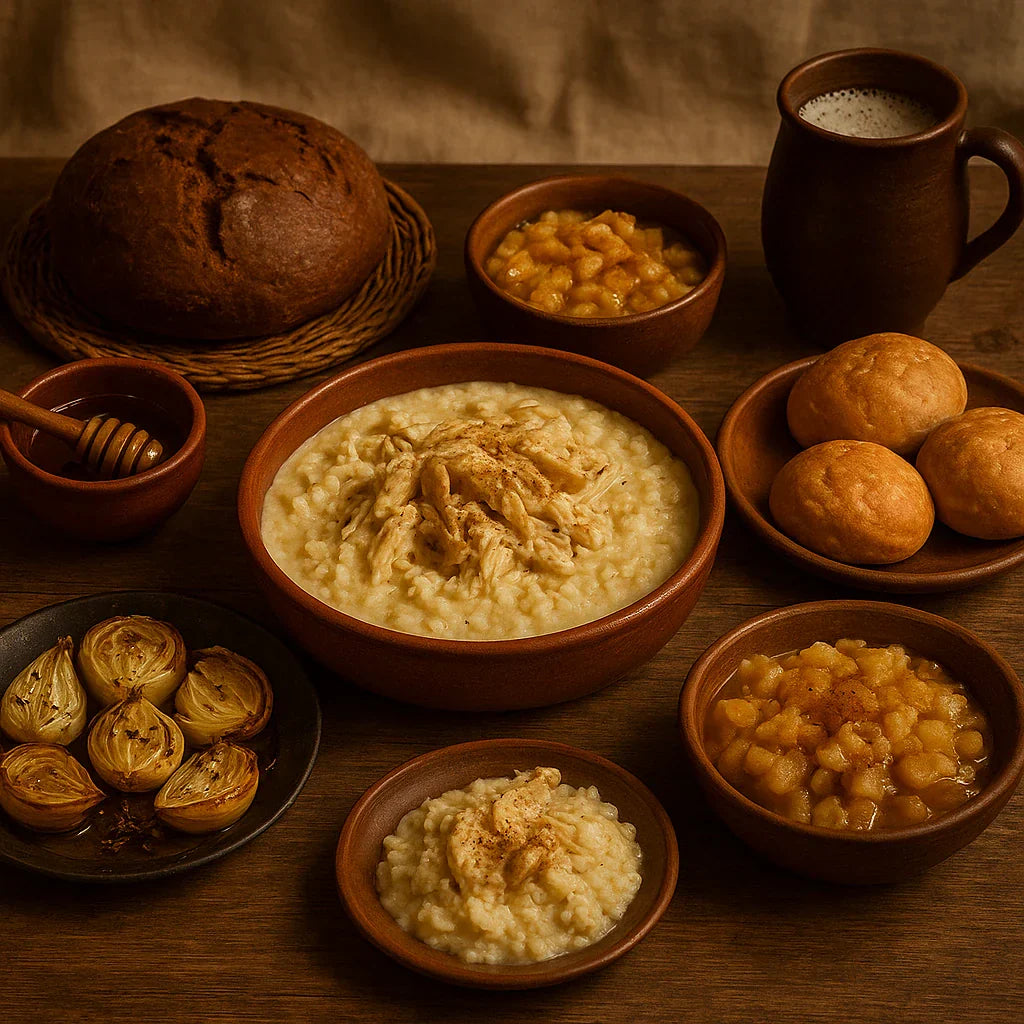Polearms, with their long handles and metal tips, were key in medieval warfare. Versatile and lethal, they dominated battlefields for centuries, being essential for both infantry and cavalry.
Below we present those used during the Middle Ages.
Quarterstaff
The medieval walking stick was a hard wooden weapon, between 1.5 and 2.1 meters long, sometimes with metal tips or reinforcements.
Simple to manufacture and effective for close combat.
Its use included blows, thrusts and defenses with various guards, making it one of the most accessible and versatile weapons.
Spear s
They were fundamental weapons since ancient times, with a wooden shaft and metal tip.
Variants such as the angon or the winged lance stood out in the High Middle Ages.
Used both for throwing and for ramming, lances were essential weapons in formations such as the Scottish schiltron, ideal for repelling cavalry charges.

Winged Spear
They had metal wings on the sides of the tip to prevent excessive penetration or to aid in fencing.
This type was popular among Franks, Vikings and other tribes.
Its design improved control in combat and was the basis for the evolution of weapons such as the spetum or the partisan.
Pica
It is a long spear between 3 and 6 meters used mainly by infantry in compact formations to stop cavalry.
Made of ash, the pikes were reinforced with metal bars.
Corseques
They have a head with three blades and were a common weapon in the 16th and 17th centuries.
Its design was derived from winged spears and could have lateral or hooked blades.
The brace was used for both piercing and hooking, being effective against mounted enemies.

Fauchard
It had a curved, sickle-like blade on a 2-meter shaft.
It was common between the 11th and 14th centuries.
Although not very efficient initially for combat, it evolved to incorporate additional points on the blade, giving it more versatility.
Gujas
They were a pole weapon with a sharp, elongated blade, similar to a large knife, on a long handle.
Used by both infantry and cavalry, it could include small hooks on the reverse.
It was popular during the 13th century.

To stew myself
It consisted of a long pole with a hook at the end, used primarily to dismount riders.
Its hook allowed it to catch armor and horses, being very effective in combat against cavalry.
Halberd
It is a two-handed polearm, with an axe blade, a point and a hook on the back, combining the ability to cut, thrust and hook.
Its use spread from the 14th century and today it is a ceremonial symbol in several guards.

Danish axes
It had a heavy crescent-shaped head on a long handle.
Of Viking origin, it spread throughout Europe in the 11th to 13th centuries.
It was used both in battle and in hunting, standing out for its cutting power and forcefulness.
Esparto or sparth
They were variants of the Danish axe with wider blades and long handles, used mainly in Ireland and Scotland.
They were heavy weapons that allowed deep cuts and strong blows.
Bardiche
It is a long-shafted axe used mainly in Eastern Europe and Russia since the 14th century.
It was characterized by a wide, elongated blade, mounted on a long handle, combining cutting and reach.

Pollaxe or long axe
It evolved to combine an axe blade, a rear pick, and a hammer.
It was widely used in the 14th and 15th centuries to pierce armor and fight hand-to-hand, being the preferred weapon for heavy infantry soldiers.
Mace
It was a hammer with a heavy head mounted on a long handle.
Easy to make, it was used since the 14th century as a blunt weapon to hit armor.
It was popular with archers and infantry troops who needed an effective blunt weapon.
Becs de Corbin or Crow's Beak
It combined a hammer with a sturdy pick to tear apart armor.
Similar to the Lucerne hammer, this polearm was effective in close combat for piercing and breaking metal defenses.

Weapons adapted to the needs of the environment
Polearms defined medieval combat for their versatility, range, and effectiveness in open fields or sieges.
Its evolution reflects the tactical adaptation of European armies over a thousand years of conflict and social transformation.









